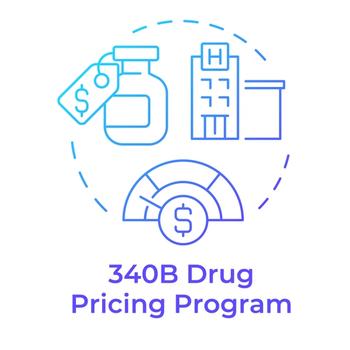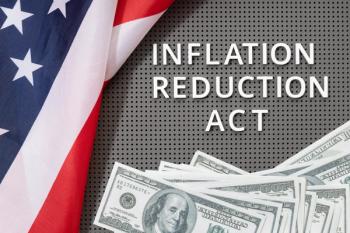
3Axis Report Scrutinizes PBM Spread Pricing Practice
The 3Axis Advisors analysis suggests PBMs’ spread pricing practices leads to employers being charged different amounts for the same medications and to pharmacists facing reimbursement challenges.
On the heels of the
PBM practices have also had an impact on pharmacies, the study shows. Pharmacies are receiving lower reimbursements for the same prescriptions where employers are paying higher prices.
This difference in costs and reimbursement, the report said, is occurring separately from drug manufacturer pricing. 3Axis Advisors found that drugs with the same NDC numbers can have different prices on the same day. The Pharmaceutical Care Management Association (PCMA), a PBM trade group, has long said that pharmaceuticals are causing high drug costs.
“As the public clamors for relief from rising prescription drug costs, it is important to understand that PBMs play a central role in determining the fates of pharmacies, plan sponsors and patients,” Antonio Ciaccia, president of 3 Axis Advisors, said in a
3Axis Advisors investigated the experiences of Washington state commercial plan sponsors/employers and community pharmacies’ with PBMs. Researchers analyzed both sides of the PBM’s drug transactions: what pharmacies are paid for and what employers are charged for the same drug. The analysis included more than 9 million prescription drug claims from both small retail pharmacies and commercial employers in the state of Washington from 2020 to 2023.
The analysis found that for a subset of matched claims between the plan sponsors and the pharmacies, the average plan sponsor/employer costs were about $165,000 higher (roughly 80% more) than the reimbursement provided to pharmacies (about $8 more per prescription).
The report suggests there the reason for this is the PBM practice of spread pricing, in which PBMs charge clients a higher price but reimburse pharmacies a lower price and keeping the difference. In one example mentioned in the report, pharmacies were paid $18.77 below the acquisition cost for the addiction medication buprenorphine-naloxone SL (generic Suboxone). Plan sponsors, however, were charged $100.12 above the drug cost based on the National Average Drug Acquisition Cost (NADAC) model. NADAC is the approximate invoice price pharmacies pay for medications in the United States.
The Centers for Medicare and Medicaid Services (CMS) implemented this in 2016 for the Medicare and Medicaid pharmacy programs. NADAC randomly surveys 2,500 pharmacies per month, and this represents the average price paid by pharmacies. It is updated weekly. This model was developed by the CMS in response to an Office of the Inspector General (OIG) report in 2012 that found the average wholesale price (AWP) benchmark was flawed.
The analysis found that plan sponsor/employer costs increased by 30% while pharmacy reimbursement decreased by 3% between 2020 and 2023. At pharmacies, generic drugs represent 96% of the pharmacy’s margin, so reduced reimbursements for generic drugs can have a significant impact. Sponsors, on the other hand, are experiencing higher costs related to branded drugs.
PBM-affiliated mail-order pharmacies, had drug markups that were more than three times higher than the markups at retail pharmacies, according to the analysis. One example in the report is the multiple sclerosis medication teriflunomide (generic Aubagio). The analysis found that plan sponsors were charged an average of $4,465 per teriflunomide prescription at PBM-affiliated mail-order pharmacies. The same drug is available at Mark Cuban Cost Plus Drug Company for less than $20.
PCMA, however, questions whether 3Axis Advisors understands pharmacy reimbursement in Washington state. Greg Lopes, vice president of public affairs and communications at PCMA, told Formulary Watch: “The report, like all their others, is just more of the same cherry-picked data that 3Axis attempts to portray as indicative of the entire prescription drug market. 3Axis’ founders are affiliated pharmacy lobbyists with an agenda. The report should not be taken seriously.”
PCMA in a statement said the NADAC is not an appropriate benchmark and doesn’t reflect pharmacies’ acquisition costs. “It is widely known that only independent and small chain pharmacies have historically participated in this survey, and at that, only if they want to. Because these smaller pharmacies buy in smaller volumes, they are not able to receive discounts on prescription drugs as deep as larger pharmacies\with more buying power,” the statement said.
Ciaccia told Formulary Watch by email that the 3Axis Advisors’ report covers approximately 3 million claims from employers and about 6 million claims from pharmacies. “The only reason we didn’t have more employer data was the fact that PBMs withheld the claims data from a number of employers, thus not allowing for a broader analysis, which I think speaks for itself,” he said.
He noted that the analysis used NADAC, as well as wholesale acquisition cost, Mark Cuban Cost Plus Drug Company, and Texas Medicaid prices for comparisons throughout the report. “My educated hunch is that PCMA doesn’t like the use of these benchmarks for the exact reason that they can be so demonstrative of their members’ pricing games,” Ciaccia said.
The 3Axis report comes out just days after the New York Times story, which found that PBMs often act in their own financial interest by overcharging employers and government programs, underpaying pharmacies, not disclosing fees and rebates and delaying access to medication.
“The main lobbying group for the PBMs says that in 2022 they saved their clients and patients
Newsletter
Get the latest industry news, event updates, and more from Managed healthcare Executive.


















































